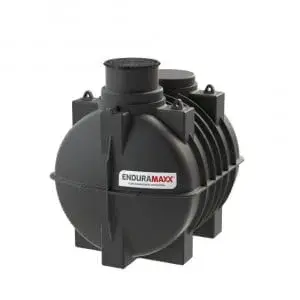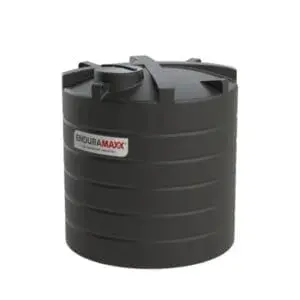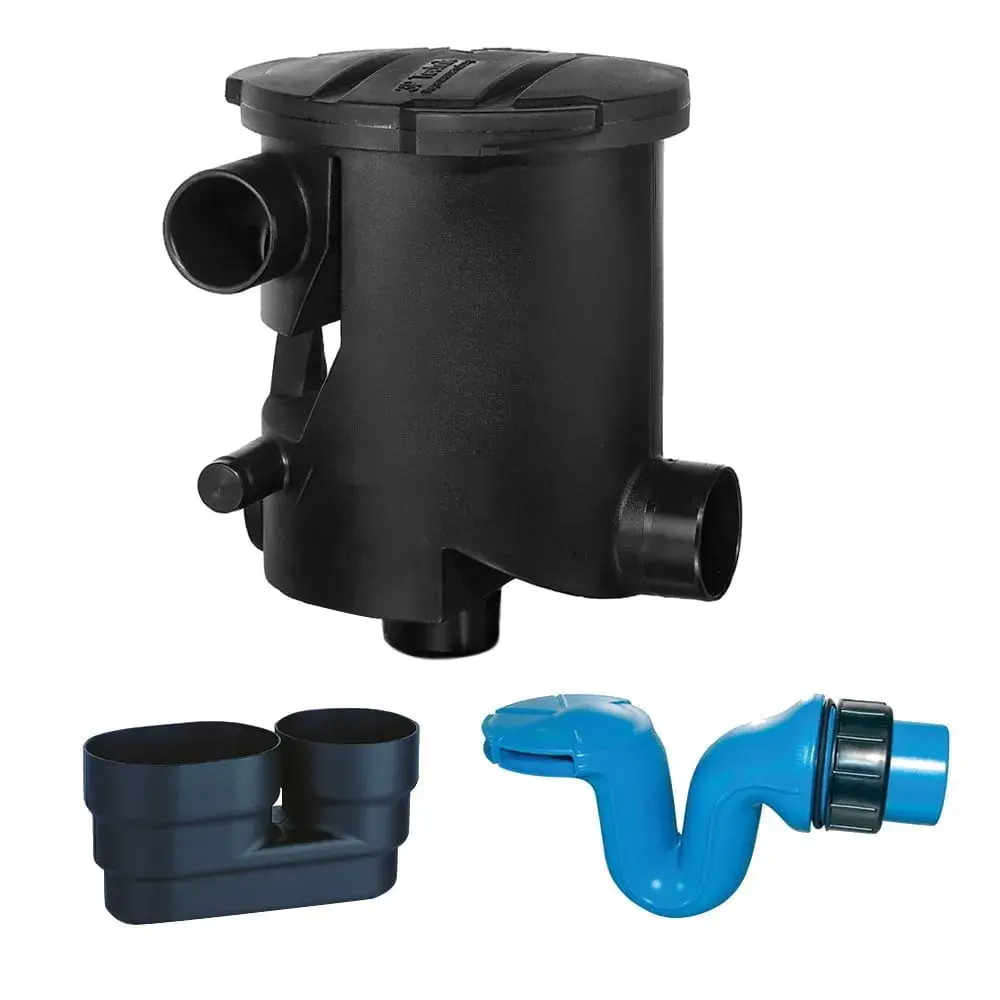Rainwater is better for your garden than tap water, most water treatment plants in England use a combination of coagulation, sedimentation, filtration, disinfection and fluoridisation processes to provide safe, clean drinking water to the public. Coagulation involves adding iron or aluminium salts to the water.
These chemicals have a positive charge that neutralises the negative charge of dissolved and suspended particles in water and causes them to bind together or coagulate. The larger particles are heavy and quickly settle to the bottom of the water supply in a process called sedimentation. The next step in water treatment is filtration and involves forcing the water through a filter medium that permits the fluid to pass through but retains the solid particles. Filtration may not remove all the microorganisms found in water from natural sources such as rivers and reservoirs and whilst not all microorganisms are harmful to human health, some, called pathogens, may be harmful if consumed through drinking water.
After filtration, water is subject to disinfection to remove pathogens from the water supply. The most common form of disinfection is chlorination as it is very effective yet inexpensive and easy to implement. In water, chlorine forms a weak acid called hypochlorous acid that kills pathogens. Importantly, a small level of chlorine needs to stay in the water after it leaves the treatment plant to keep it protected from water-borne pathogens. The final process is fluoridisation. Tooth enamel can be weakened when bacteria in the mouth combine with sugars to form acids that cause tooth decay. Fluoride treatments strengthen tooth enamel and prevent tooth decay.
Depending on the source of the supply, water may have high mineral content, and the presence of magnesium and calcium is responsible for hard water. Hard water interferes with almost every cleaning task from laundering and dishwashing to bathing and personal grooming and results in a build-up of limescale deposits that damage pipes and reduce water flow. Treatment of hard water typically involves the addition of lime (hydrated calcium oxide) or lime soda (lime plus sodium carbonate) that react with calcium and magnesium, and increase the precipitation rate, reducing the hardness of the water. By the time mains water is delivered to your tap, it is clean and safe to drink. It does, however, contain fluoride and residual chlorine, minerals and coagulants, and while these are not considered to be harmful to health, what about the impact on your plants if you use tap water in the garden?
Tap water in the garden – With prolonged use, the chlorine, fluorine, minerals and coagulants in tap water can accumulate in the soil and create unfavourable conditions for the uptake of nutrients and water in plants.
Chlorine is a nutrient required for plant growth, but necessary only in minute quantities. Chlorine can kill bacteria, in excessive amounts it could have a negative impact on the good soil bacteria that benefit plants. While chlorine kills some of the microbes in your soil, the chlorine levels in tap water are so low, and the beneficial beasties reproduce so quickly that populations rebound in a short time. In one study, researchers continuously applied highly chlorinated water to soil for 126 days. Two days after they stopped, the soil microorganism populations reached pre-treatment levels at all depths of soil.
Most gardeners can cross chlorine off their worry list.
Fluoride If fluorinated tap water is used on a consistent basis to water plants, the fluoride can build up in plant tissues – in particular, the leaves – over time, inhibiting the process of photosynthesis and causing damage to plant tissues. Fluoride moves through plants with the water, coming to rest along the outer edges of the leaves or the tips of needles. Some plants are more susceptible to fluoride than others. Plants that suffer from fluorine or fluoride toxicity usually show dead areas on the margins and tips of leaves, which turn yellow or brown and sometimes become dry and brittle. It doesn’t usually kill the plant, but the symptoms can be unattractive.
Other minerals Magnesium and calcium are responsible for hard water and to prevent scale build-up and damage to pipes, a water softener is added to tap water. Regular use of tap water can result in the presence of white sediment on leaves, which is caused by magnesium and calcium build-up. Sodium can kill plant tissue. In addition to harming plant tissue, sodium can also do significant damage to soil structure. In a healthy garden, soil clumps together in highly beneficial aggregates. The use of sodium causes these aggregates to disperse, and when this happens, soil surface cracks are created.
How rainwater differs from tap water – while tap water probably won’t harm the plants in your garden, rainwater is definitely good for them. Rainwater is better for your garden than tap water!
Nitrogen is essential for plant growth and is a major component of chlorophyll, the green pigment in plants that absorbs sunlight and uses its energy to produce sugars from carbon dioxide and water. This process is known as photosynthesis and is the basis for sustaining the life processes of all plants. If plants are deficient in nitrogen, they might look yellowish, but prolonged nitrogen deficiency will cause plants to wither and die. Tap water is almost always a poor source of nitrate because water treatment plants minimise the nitrate content of drinking water as high concentrations can be dangerous for young children. While nitrogen makes up about 78% of the earth’s atmosphere, plants cannot access it directly as it requires too much energy to convert it into a form they can use. Instead, plants must rely on a process called ‘nitrogen fixation’ by which nitrogen in the air is converted into ammonia or related nitrogenous compounds in soil.
While nitrogen can be fixed (or combined) in nature by lightning and ultraviolet rays, nitrogen-fixing soil microorganisms are responsible for more than 90% of nitrogen fixation. Nitrogen-fixing bacteria invade the root hairs of host plants where they multiply and stimulate the formation of root nodules. Within the nodules, the bacteria convert free nitrogen to ammonia, which the host plant utilises for its development. Plants can also get their nitrogen from high-energy processes in the atmosphere, like solar radiation and lightning. The enormous energy that lightning generates is enough to break down and convert atmospheric nitrogen into nitrogen compounds. When these mix with oxygen and water in the atmosphere, the resulting rainfall will contain greater levels of nitrates and ammonium. A summer thunderstorm will not only give your plants a good watering, but it will also give them a good top-up of nitrogen.
pH – Gardeners will know that most plants prefer slightly acidic soil and that pH levels between 5.5 and 6.5 are perfect for nutrient absorption. Depending on where it is sourced, tap water is generally more alkaline, and the pH is too high for optimum plant health. Greywater will start with the same pH as tap water, but the addition of soaps and detergents can increase the pH as high as 9 or 10. Rainwater is your friend. As it falls through the atmosphere, each raindrop absorbs carbon dioxide. When carbon dioxide in rain combines with other atmospheric minerals, the drops become slightly acidic. As soon as these slightly acidic raindrops reach the soil, they facilitate the release of micro-nutrients like copper, manganese, iron, and zinc (which are important in plant growth) from the soil.
Naturally Soft Water – tap water is often “hard” and contains various minerals and salts that could build up in the soil and create unfavourable conditions for the plant uptake of nutrients and water. Rainwater is free from minerals and salts and is naturally soft.
Making the most out of rainfall, while many plants don’t mind tap water, there is no doubt that rainwater is a better long-term option. It is naturally soft, slightly acidic and contains dissolved nitrogen. Creating much more favourable conditions for the uptake of nutrients and water that are essential to plant health. To get the most out of your rainfall, you need to create a rainwater harvesting system that allows you to capture and store rainwater that would otherwise be discharged into the stormwater drainage system and lost.
A rainwater harvesting collection system has three components:
- A catchment system is an area onto which rainwater falls and is collected
- A storage system that accumulates rainwater for future use
- A delivery system that transfers water from its place of storage to its place of use
Rainwater is better for your garden than tap water – if you want to create an effective rainwater harvesting system, create the optimum environment for healthy plants, talk to our team today to find out how we can help you on 01778 301533 or email sales@enduramaxx.co.uk with your enquiry.
Posts By Topics
- Blog (303)
- Chemical Storage Tanks (118)
- Chemical Dosing Tanks (114)
- Chemical Tanks (114)
- Water Tanks (58)
- Rainwater Harvesting Tanks (43)
- Vertical Rainwater Tanks (31)
- Vertical Storage Tanks (31)
- Cone Bottom Tanks (19)
- Conical Cone Tanks (18)
- Rainwater Harvesting (17)
- Water Bowsers (15)
- Horizontal Tanks (14)
- Potable Water Tanks (13)
- Farming (9)
- Case Studies (8)
- Industrial Storage Tanks (7)
- Liquid Fertilser Storage Tanks (6)
- WRAS Approved Potable Tanks (6)
- Wine and Beer Production (6)
- Horizontal Transport Tanks (5)
- Microbrewery (5)
- Rainwater (5)
- Category 5 Break Tanks (4)
- Cider Production (4)
- Mixer Tanks (4)
- Molasses Tanks (4)
- Polyethylene tanks (4)
- Rainwater Filter Kits (4)
- SPECIALIST & BESPOKE TANKS (4)
- Bunded Tanks (3)
- Slimline Tanks (3)
- WRAS Approved (3)
- Clarification Tanks (2)
- Crosslinked Polymer Tanks (XLPE) (2)
- Fertiliser Tanks (2)
- Sump Tanks (2)
- Tank Installation (2)
- Water Butt (2)
- underground water tanks (2)
- ACCESSORIES & FITTINGS (1)
- ATV & UTV SPRAYING UNITS (1)
- Above Ground Effluent Tanks (1)
- Bespoke Tank Frames (1)
- Category 5 Turret (1)
- Caustic Soda Tanks (1)
- Closed Top Bunded Tanks (1)
- Craft beer (1)
- Effluent Tanks (1)
- Enduramaxx (1)
- Ferric Chloride Tanks (1)
- Fire Safety Regulations (1)
- Fire Sprinkler Water Storage Tanks (1)
- Industrial Water Tank (1)
- Open Top Bunded Tanks (1)
- Open Top Cone Tanks (1)
- Open Top Vertical Tanks (1)
- Polyethylene Potable Water Tanks (1)
- Polyvinylidene Fluoride (PVDF) Tanks (1)
- Polyvinylidene Fluoride Tanks (PVDF) (1)
- Pressure Washers (1)
- Pro Series Spot Sprayers (1)
- RWH (1)
- Sodium Hydroxide Storage Tanks (1)
- Sprayer Fill-up Tanks (1)
- Uncategorised (1)
- liquid fertiliser tank (1)
Sign up to the newsletter
enduramaxx.marketing
Related Posts
Save Water With The Best Quality Rainwater Tanks Above & Below Tanks
Save Water with the Best Quality Rainwater Tanks, for those living on rural properties and running...
Slimline Rainwater Tanks: 400 - 1000 Litre Slimline Tanks
Enduramaxx new slimline rainwater tanks are available in flat, upright or horizontal designs and...
Why Rainwater Filters Are Important? Improved Rainwater Tank Quality
Why rainwater filters are important? A rainwater filter for a rainwater harvesting tank is a filter...
Related Products
From £1,080.00 inc. VAT
£900.00 exc. VAT
From £1,344.00 inc. VAT
£1,120.00 exc. VAT
From £768.00 inc. VAT
£640.00 exc. VAT
£480.00 inc. VAT
£400.00 exc. VAT





